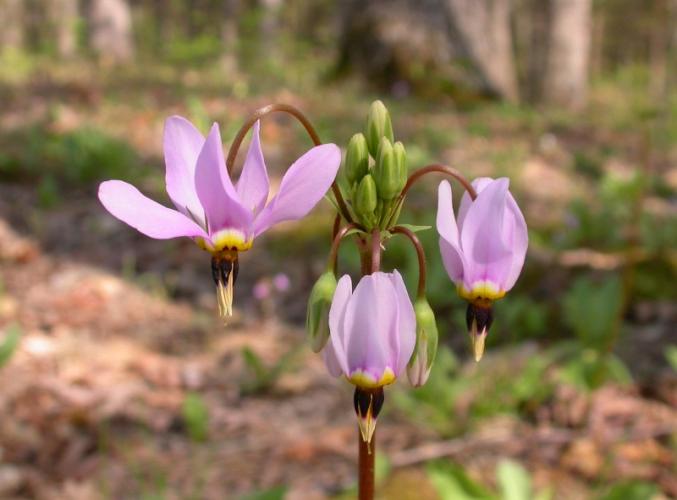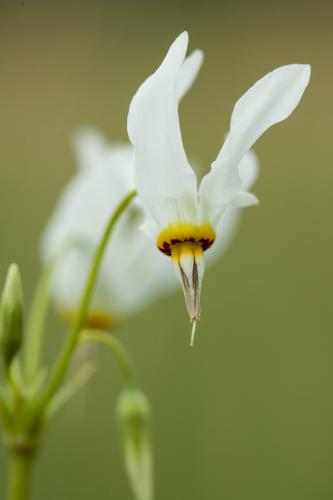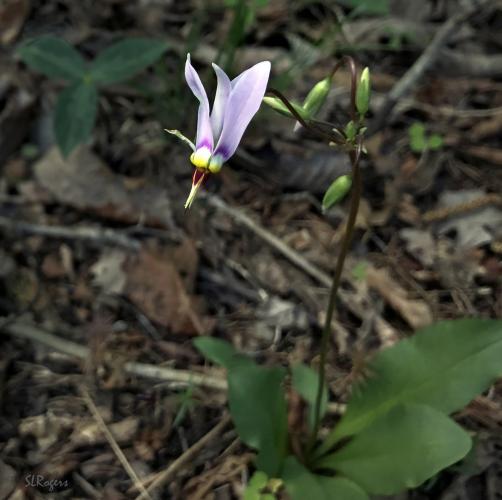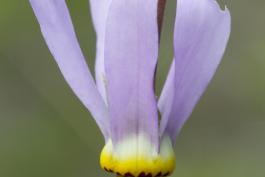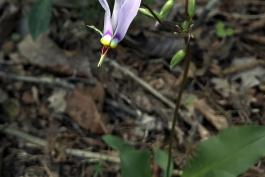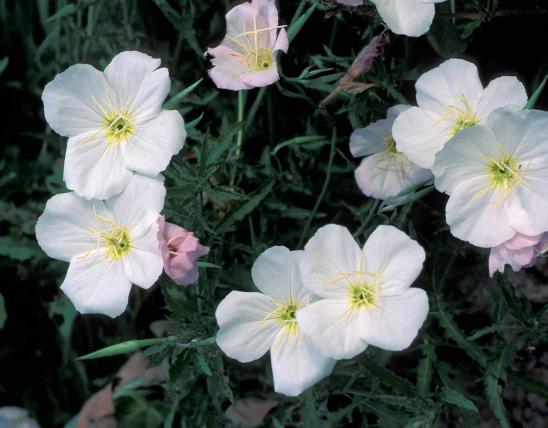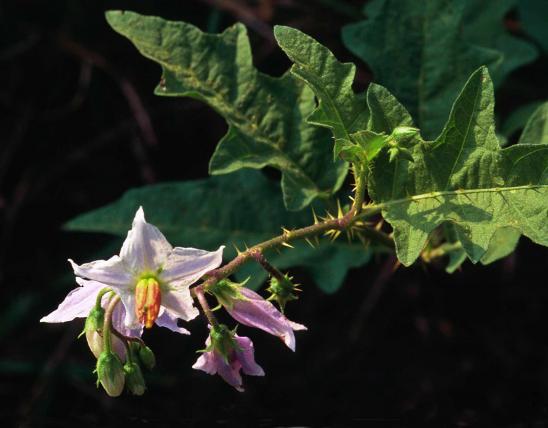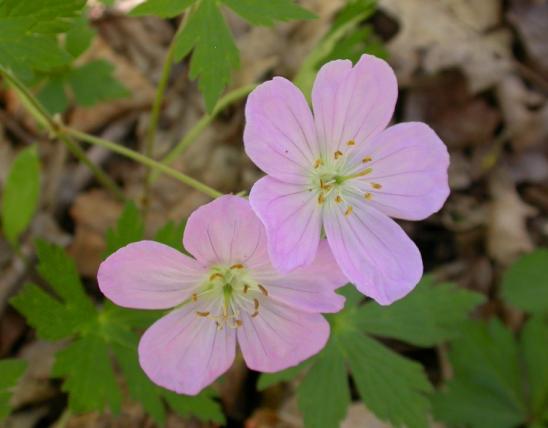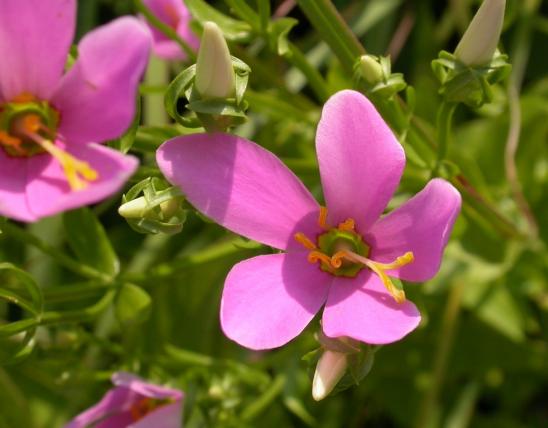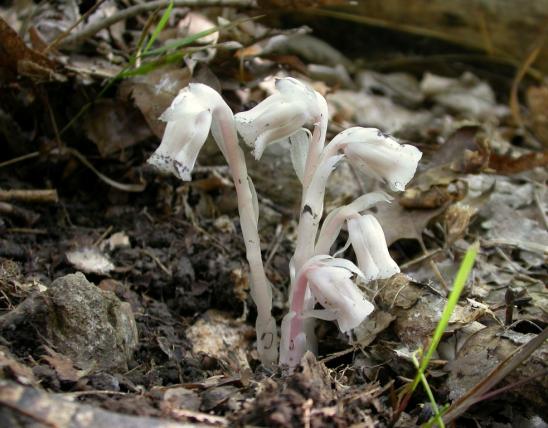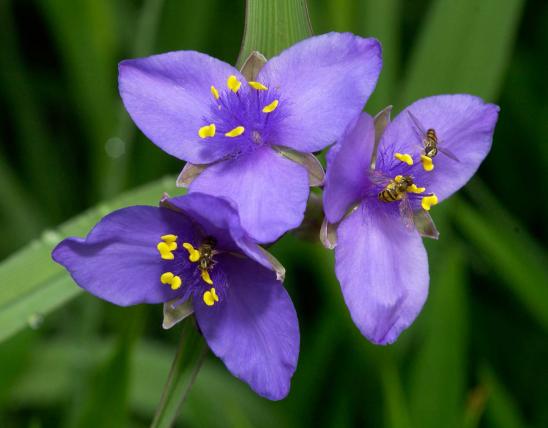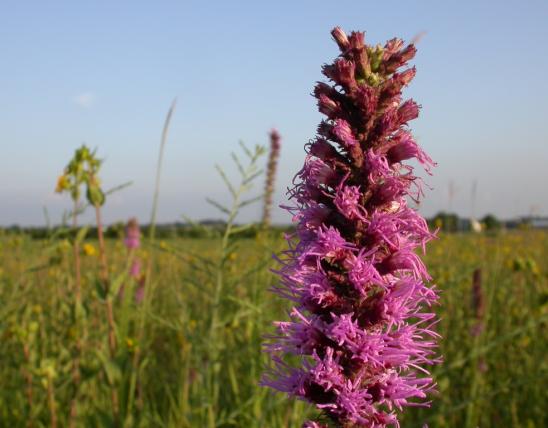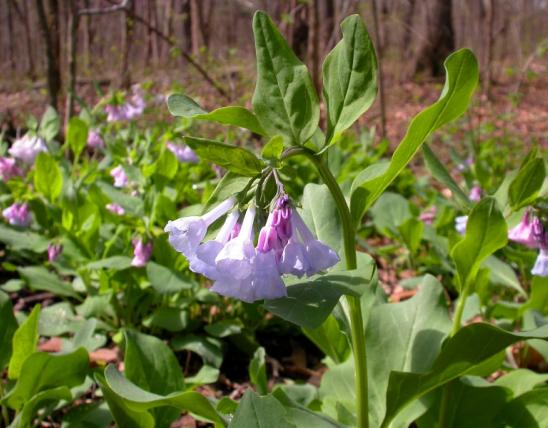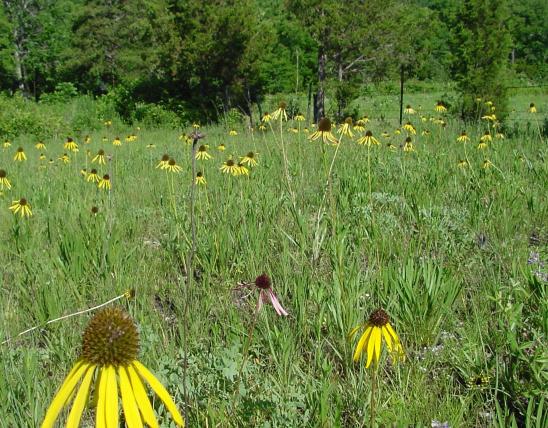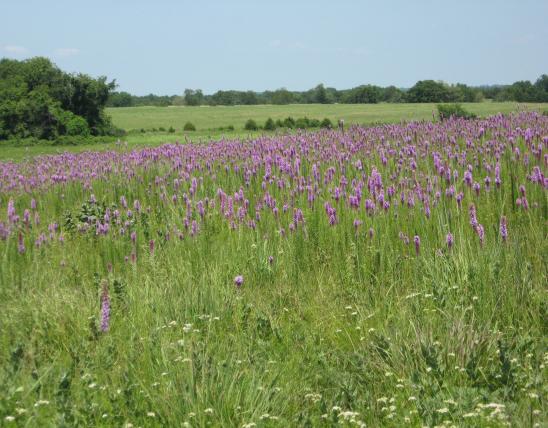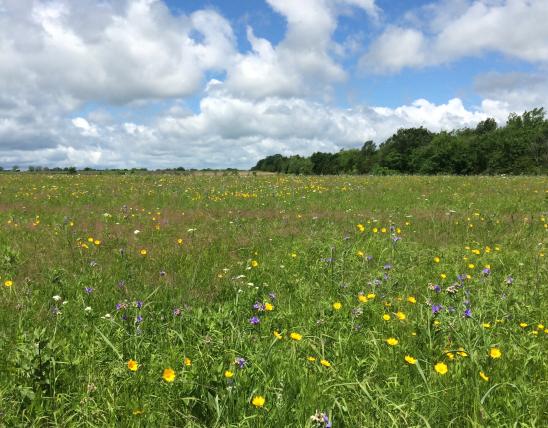
Common shooting star is beloved native spring wildflower. It's a nonwoody perennial with a long flowering stalk that rises from a whorl of basal leaves. The tip of the flowering stalk has several smaller, drooping stalks, each of which bears a single flower. Each flower has 5 petallike, large lobes that recurve upward. The stamens and pistil protrude downward from tube, giving the “shooting star” appearance. Color may be pink, white, or purplish. Blooms April–June. Leaves are all basal, long-ovate to spatula-shaped, narrowed toward base, the midrib often tinted red. Plants and flowers on prairies are much more robust and larger than those growing on glades.
Similar species: Missouri has two other native species of shooting stars, both uncommon, neither widespread:
- Amethyst shooting star, or jeweled shooting star (P. fassettii; syn. D. amethystinum) is a Missouri species of conservation concern; it is uncommon in central Missouri and in Marion County, occurring on moist ledges and tops of limestone and dolomite bluffs. It looks very similar to common shooting star, but its leaves are more bluish, the petals a deeper, uniform pink or purple, and the fruiting capsules are more cylindrical (not very tapered) and have thinner walls. The current range of this species is apparently related to periods of glacier expansion and retreat across North America.
- French's shooting star (P. frenchii; syn. D. frenchii) is a Missouri species of conservation concern; in Missouri it is known from only Ste. Genevieve and possibly Douglas counties. Occurs on ledges of moist, shaded, usually overhung sandstone bluffs. It has white flowers, and its leaf blades are cordate (lobed) at the base, abruptly tapered to the leaf stem.
Height: to 2 feet.

Nearly statewide; absent or uncommon in the northwestern quarter and in the far southeastern counties.
Habitat and Conservation
Occurs in prairies, glades, bluffs, and open wooded slopes. Plants are often seen in woods, but this species does not flower well in shaded areas. The fragrance of the flowers is something like the odor of grape juice, and the roots are said to smell something like canned corned beef.
Status
Native Missouri wildflower.
Human Connections
At least one cultivated variety has been developed with larger flowers and taller flowering stalks. If you are wanting to grow shooting stars in your garden, please make sure you get them from an ethical nursery that doesn’t dig plants from the wild or buy from any suppliers who do.
The species name, meadia, honors the English physician Richard Mead (1673–1754), who contributed to medical knowledge about transmissible diseases. Like other doctors of his time, he was also interested in natural history. Linnaeus was the botanist who named the plant after him.
Ecosystem Connections
The unusual form of the flowers is an adaptation for a special pollination strategy. In this case, queen bumblebees (active in spring when this species flowers) cause the flower to release pollen by rapidly vibrating muscles in their thorax. This is sometimes called "buzz pollination," and only certain types of bees can pollinate flowers this way. Only pollen is collected, because although shooting star flowers are fragrant, they do not produce nectar. Apparently, shooting stars are incapable of fertilizing themselves, thus they depend on bees for pollen transport.
After this plant has flowered and produced seeds, the foliage withers in summer and the plant goes dormant until next spring.
